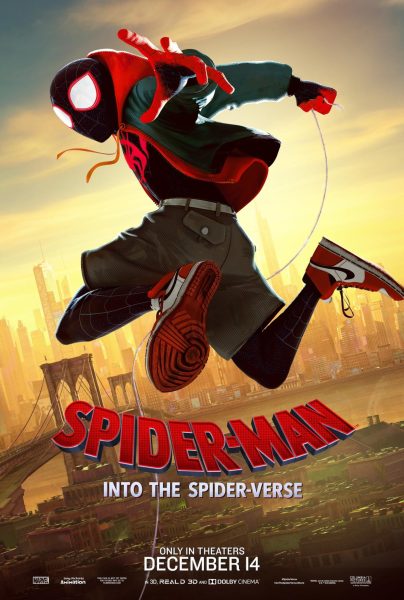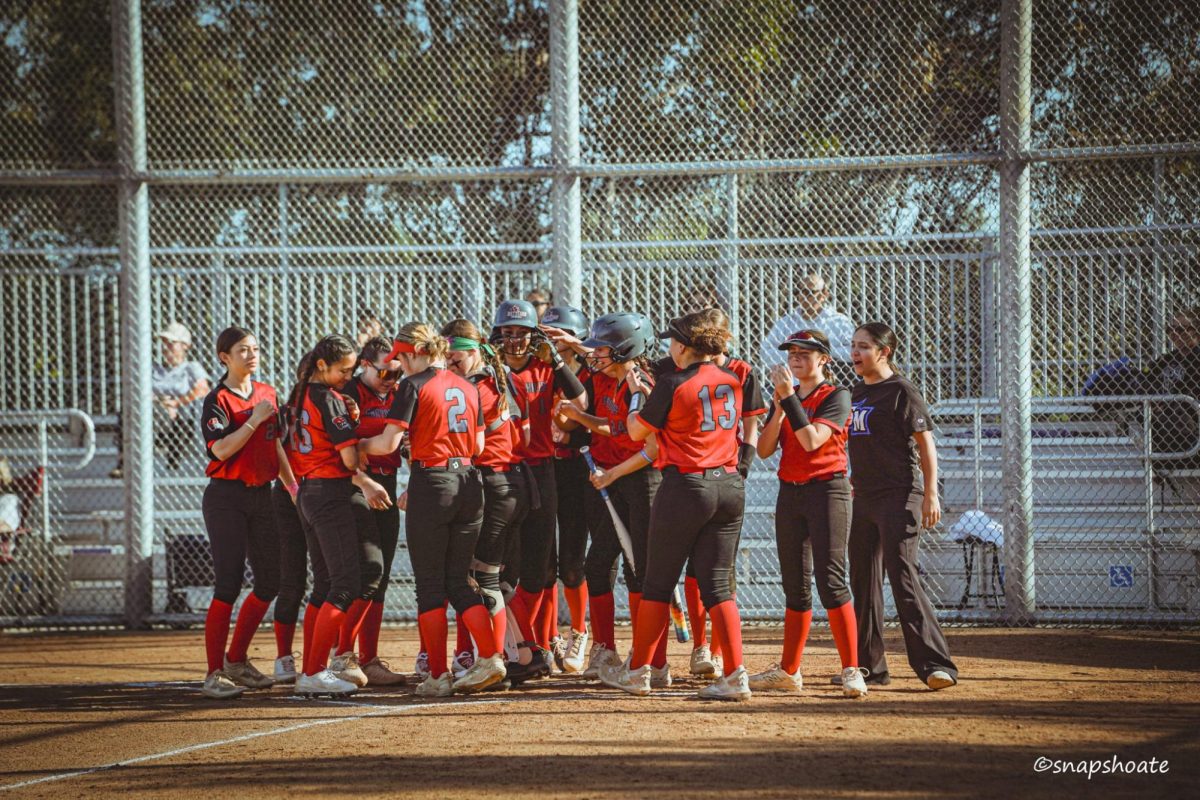
Spider-Man has been around for over twenty years, and has had many adaptations since the character’s original release, including multiple storytelling video games exclusive to Sony’s PlayStation consoles. Source: Insomniac Games
“Spider-Man, Spider-Man / Does whatever a spider can.” That is the description from the theme song of one of the most famous superheroes of all time: Spider-Man. Created by Stan Lee and Steve Ditko in 1962, the character was created as a groundbreaker to already existing comic book tropes: teenagers going from the sidekick to the hero of their own story. His powers include superhuman strength, spider-like instincts, the ability to climb walls, and his own designed web shooters. Over the years, the character has shifted from just adolescent Peter Parker to an array of faces and ages, which has had a heavy impact on our own pop culture.
The character was first introduced into the comic book world in 1962 with the fifteenth issue of the “Amazing Fantasy” anthology comic series, during the Silver Age of comic books (1956-1970), where “a majority of the superheroes with mainstream iterations” were created, says CHHS senior James Mah.
“The creation of heroes like the Fantastic Four [happened] during the Silver Age,” said Mah. “They became more mainstream because of the advanced art and stories.”
Spider-Man was introduced as a teenage boy named Peter Parker, a nerd who didn’t fit in very well with his peers but was super smart, and lived with his Aunt May and Uncle Ben. He ended up being bitten by a radioactive spider during a school field trip, and gained some instincts and physical traits related to spiders, such as agility, sticky fingers allowing him to stick to walls, and a “spider-sense” instinct. At first, he decided to become a wrestler to earn some money. During the backstage of one of his performances, a criminal robbing the place ran through, and he did not stop him, even though he could’ve. However, this particular criminal then shot a man on the street, and Parker was horrified to find out it was Uncle Ben who was shot. Uncle Ben had once told him that great power came with great responsibility, and he realized he could’ve prevented his uncle’s death had he stopped the criminal. Parker began using his powers for good under the masked persona “Spider-Man” to stop crime in New York.
This edition of Amazing Fantasy blew up in popularity, uplifting superhero comics greatly.
“The impact was positive, as Marvel had created a character that readers could relate to, as he was just an everyday nerdy kid turned masked vigilante,” said Mah. “Most heroes at the time were adult men with jobs and money. This shook up the formula.”
With sky high sales for the comic, Spider-Man ended up getting his own comic series, the first issue being titled “The Amazing Spider-Man #1.” The series ran over two different volumes, with seven hundred issues, from 1963 to 2012. It was then replaced by “The Superior Spider-Man.”

Since the release of the first Spider-Man comic run, there have been hundreds of variants of Spider-Man across comics and manga, television shows, and movies.
“Spiderman is a very simple character, but that really helps the writer(s) put him in many different situations and make it work,” said CHHS senior Daniel Jarquin. “He is also one of the characters that is becoming more synonymous with the multiverse, which works a lot since many of us can see ourselves in his place and now even imagine variants of ourselves.”
Even fan made content has brought along new official Spider-Man variants, including Charlotte Webber/Sun-Spider, an originally fanmade “Spidersona” (Spider-Man identity), that was featured in the third issue of the comic series “Spider-Verse Volume 3” and later on the movie “Across the Spider-Verse.” Fanart and content creation of fanmade spidersonas has become even more popular since the release of “Across the Spider-Verse” in June 2023.

Source: @addisonthethespian on Instagram
Spider-Man has had a very long life and journey in the world of cinema and television. There have been many animated shows, first beginning with ABC’s animation “Spider-Man” that ran from 1967-1970. Other Spider-Man projects of the 1970s-2000s include “Spidey Super Stories” from PBS from 1974-1977, CBS’s “The Amazing Spider-Man” (1978-1979) live action series, “Spider-Man and His Amazing Friends” (1981-1983), and “Spider-Man Unlimited” (1999-2000), among others. One of the most intriguing projects from this era, however, was a special effects based series called “Spider-Man” (also known as “Supaidā-Man”) by Japanese company Toei. The show was made to market Spider-Man towards Japanese audiences. While it was very different from the original Marvel version, many staff at Marvel comics, including Stan Lee himself, praised the show for its practical effects and how they brought the character to life. This version of Spider-Man was incredibly successful, both for the character and Japanese television.
“They gave Spider-Man his own animated series and foreign incarnation as Japan’s own Supaidaman, which actually spawned the modern sentai team tv shows in Japan,” said Mah. “Which paved the way for Power Rangers in the 90’s.”
Other popular and successful animated projects include “Spider-Man: The New Animated Series” (2003), “The Spectacular Spider-Man” (2008–2009), and “Ultimate Spider-Man” (2012–2017).

When it comes to the movie side, it all truly started for Spider-Man in 1999, when Sony Pictures Entertainment bought the cinema and television rights from Marvel. After script rewrites between many filmmakers, rights being passed around, auditions, and directors being switched in and out, Sam Raimi was finally set to direct the “Spider-Man” trilogy in 2000, with Tobey Maguire cast as Peter Parker. There were many bumps in the road between the announcement and the release of the movie, with promo having to be pulled due to 9/11 insensitivities, cast relationships dwindling, and overall controversy from critics’ anticipation of the movie, but it ended up being incredibly successful. “Spider-Man” (2002) is regarded as one of the most successful superhero films of all time. The two sequels, “Spider-Man 2” and “Spider-Man 3”, were released in 2004 and 2007 respectively.

“These films definitely made Spider-Man more of a mainstream, household name so audiences were more willing to get out and watch these bizarre spinoff films,” said Mah. “They made superheros something that people were willing to watch and not just a concept for Saturday morning cartoons and nerds to solely enjoy.”
There were some differences between comics Spider-Man and Tobey Maguire’s adaptation, most notably the organic development of web fluid inside Peter Parker rather than technological web shooters built by the boy, but overall, the adaptation was well received and pretty similar to the original comics character. The sequels weren’t as liked, but the trilogy maintained the overall financial and media success.
Despite the trilogy’s success, however, the planned fourth installment was canceled, after director Sam Raimi pulled out due to creative differences after several disagreements and delays for the project. To make up for it, Sony announced a brand new reboot of the Spider-Man franchise, with Andrew Garfield cast as Peter Parker.
“I feel like overall it was a net good,” said Jarquin. “We can see that Spider-Man 3 wasn’t received as well, and we can only imagine that a fourth movie would be worse. Although the Garfield movies weren’t as good, it still provides a new perspective on the character and gives a new generation a new Spider-Man.”
Andrew Garfield’s movies are called “The Amazing Spider-Man” and “The Amazing Spider-Man 2.” At the time of their release, they were not the most well received.

“When people go into a movie with the preset mindset of previous franchises it usually always ends badly,” said Jarquin. “because they are expecting something else.”
Despite its flaws, the two films are now very beloved by fans today. Many have even asked for them to revive the canceled third installment and bring Garfield back as a variant of Spider-Man. Even Garfield himself has expressed interest in reprising his role. But the franchise seems to be sealed up and done.
“I honestly think that at this point in time there is a very low chance it happens, especially after Tom Holland’s movies,” said CHHS senior Mason Sautter. “Maybe there’s a chance just because of his return in the latest movies but I’d say it’s a long shot.”
Even if Garfield never comes back as Spider-Man, the cinematic universe of the character came back not long after the cancellation of “The Amazing Spider-Man 3,” this time being featured in the Marvel Cinematic Universe (MCU), as Tom Holland.
The decision to add Spider-Man to the MCU was a finicky one from Sony and Marvel Studios themselves. The talks of adding Spider-Man to the MCU go back to when Andrew Garfield was the star of the role. However, the cancellation of the third movie put it on hold until it was decided to reboot, recast, and rewrite a new Spider-Man movie series. Marvel and Sony negotiated a contract, Tom Holland was casted as Peter Parker, and they agreed that Sony would remain the driving force of the solo Spider-Man adventures with Marvel having control over his MCU-specific appearances, starting with “Captain America: Civil War” in 2016.
The popularity of the character boomed, with millions of dollars and fans rolling in to see the brand new Spider-Man. Many people have enjoyed this fusion of Spider-Man into the MCU with other popular Marvel characters, especially Tony Stark/Iron Man.

“I think that it was a great decision and it would be so much worse without him,” said Sautter. “And I have been hoping for more collaborations between the two verses.”
Tom Holland’s adaptation of the character starred in two solo movies and three MCU movies before Sony and Marvel broke their contract of continuing Spider-Man in the MCU in 2019, one month after the release of the second Spider-Man MCU movie, “Spider-Man: Far From Home.” However, after much backlash, including from Tom Holland himself, the contract was back on for Spider-Man to have another solo film, now known as “Spider-Man: No Way Home.”
“Spider-Man: No Way Home” is a Spider-Man film that ties in all three cinematic Spider-Mans together, bringing in the cast from the older movies, a multiversal crime scheme, and the death of Aunt May in place of the death of Uncle Ben for Holland’s Peter Parker. The movie holds a very large cultural impact, displaying all at once the beauty of Spider-Man in live-action cinema over the years. The success of the film has led to Holland renewing his contract for a second solo trilogy. There has been much speculation on what this next trilogy will be about, but it is agreed upon by fans that this trilogy will most likely line up Holland’s Spider-Man with the story progression of Maguire and Garfield’s original movies, as this version of the character started out younger compared to previous versions.
“I think that this extra trilogy is one hundred percent essential and I think it makes a lot of sense to say that the first one was an origin story, because it basically was,” said Sautter. “It got us familiar with the character and how he grew into a good hero.”
Peter Parker holds a lot of potential in the future of the live-action cinema industry. In the animation industry, however, the character growing in popularity is Miles Morales.
Sony released the animated film, “Into The Spider-Verse” in 2018, introducing the Spider-Man variant Miles Morales to the general public outside of just the comics community. Despite being a different character, his backstory has a similar basic core coming-of-age element: bit by a radioactive spider, loses an uncle figure, and has to learn how to be a good Spider-Man for New York and the world. However, what makes Miles Morales special is the coming-of-age as a young black and Puerto Rican boy in a world where Spider-Man has only been white. This unique element added to the character of Spider-Man furthered the concept that anyone can wear the Spider-Man mask, that anyone can be the hero.

“Into The Spider-Verse” was met with lots of praise and awards, with actor Tom Holland saying it is the “best Spider-Man film ever made,” both for its plot and characters and for the revelations in animation; the movie is a mix of 2D and 3D animation, giving a unique style that feels more like bringing a comic book to life than if it was just 2D or 3D animated. Other movies and shows have adapted similar styles, like Dreamworks’ “Puss in Boots: The Last Wish” and Netflix’s “Arcane” series. Furthermore, the film focuses on many Spider-Man characters, notably Miles Morales, Peter B. Parker (an older adult version of Peter Parker), and Gwen Stacy (a Spider-Man variant of the Spider-Man love interest).
“The series just adds so many new and diverse characters to the screens,” said Sautter. “The diversity of them makes sure that each person watching connects or likes at least one character on the screen that makes them want more [of the franchise].”
The sequel, “Across The Spider-Verse,” was released in June 2023, with its sequel, “Beyond the Spider-Verse,” now expected to be released in early 2025.
The addition of Spider-Man variants has helped greatly expand the world of the Spider-Man character. There have been many additional games, shows, and comics starring the character across many forms and personas. Pop culture has a very large spot for Spider-Man, and with the upcoming releases of much more Spider-Man content, it seems the character isn’t going anywhere.
Overall, Spider-Man has had a huge cultural impact for millions of people since the original release, and he will continue to hold this impact for many more years to come.

























